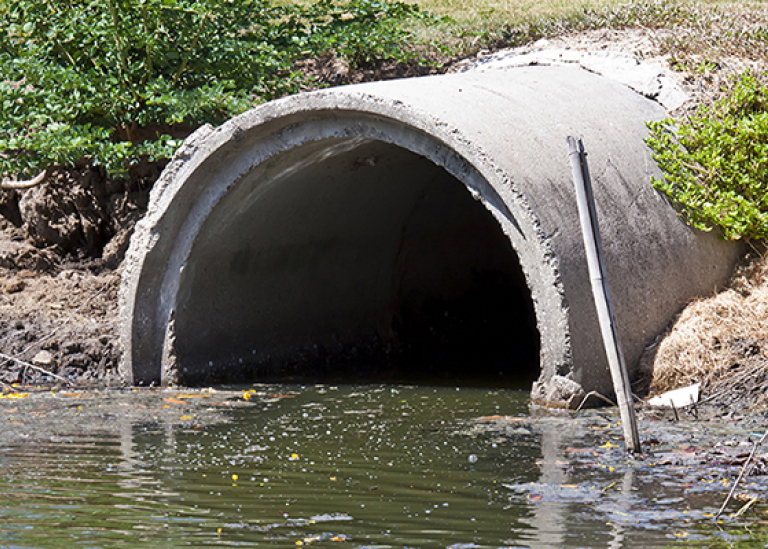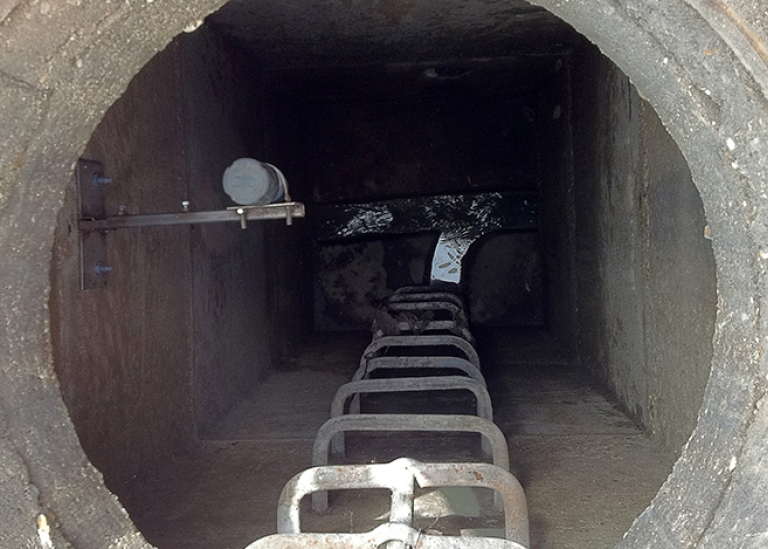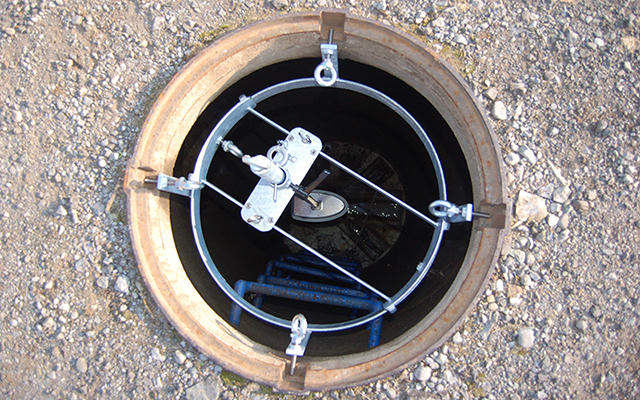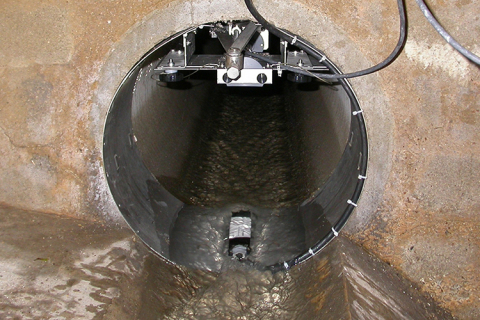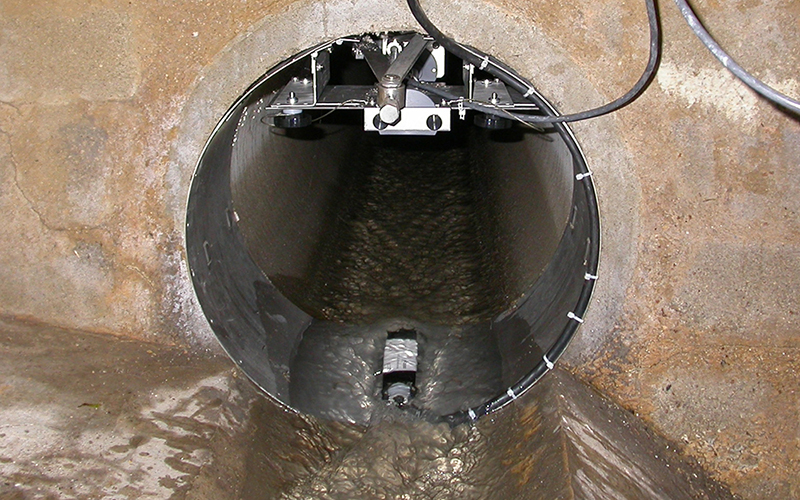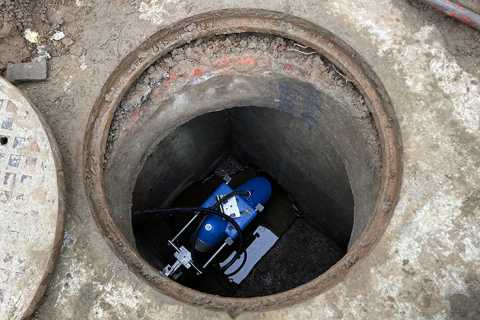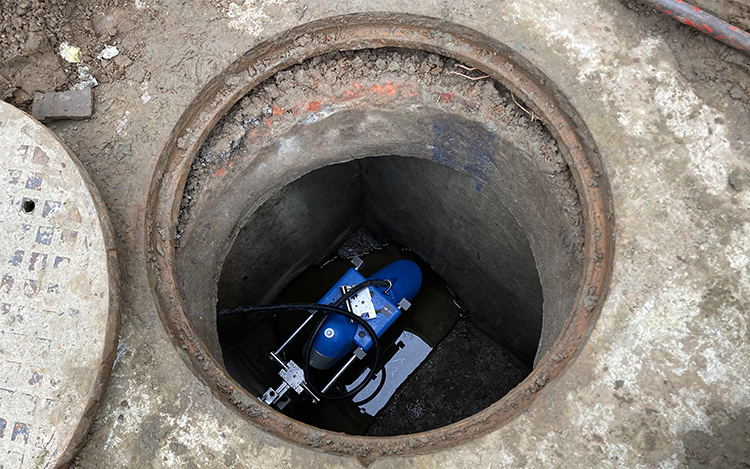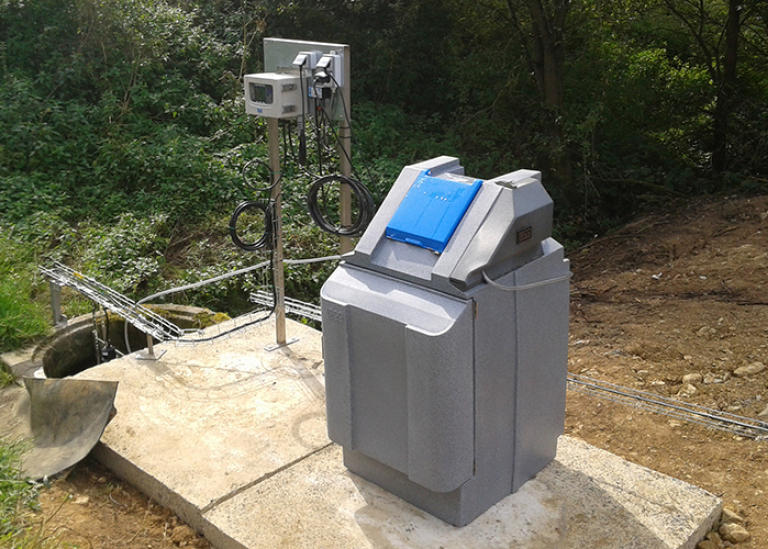
Overflow monitoring
Heavy rainfall can lead to flooding of our sewerage system. To ensure that the sewers do not overflow, several overflows are installed. These are openings in the sewer system that drain excess water into water courses. The water drained off consists of wastewater from the sewage system, mixed and diluted with rainwater. In order to assess the impact of this on the environment, it is important to monitor it continuously.
Key parameters to measure
Overflow
First and foremost, we want to know whether overflow is occurring. By means of a capacitive measurement with air reference, an accurate measurement can be made as to whether overflow is occurring at the selected measurement point. An alarm is sent when an overflow occurs. This measurement remains active until the level has dropped again and no more overflow is measured. This way, the duration of the overflow can be measured indicatively.
Overflow level
Another key parameter is the overflow level. This is measured ultrasonically. The previously mentioned "overflow alarm" can be linked to this and control the sensor to measure the level more frequently during an overflow. These sensors often contain an internal logger and modem so that the data can be logged and transmitted via 2G/3G or even 4G/LTE.
Flow rate of overflow
As a final parameter, it may be important to also monitor the flow rate of the overflow in order to estimate how much diluted sewage water has been discharged into the watercourses. Various measurement techniques can be used here, such as radar, laser and Doppler, depending on the application.
Water quality
To determine the water quality of the overflow water, sampling can always be done by means of a sampler. This can be controlled by the flow rate, by a fixed time interval or even by the "overflow alarm". In the latter case, a specific sample can be taken from the water that flows into the watercourses.
Every application is unique
All of the above measurements and sensors are certainly not limited to the example applications cited here. Every application is different and has its own “challenges”. Together with you, we would like to find the perfect solution for your application.
More information?
